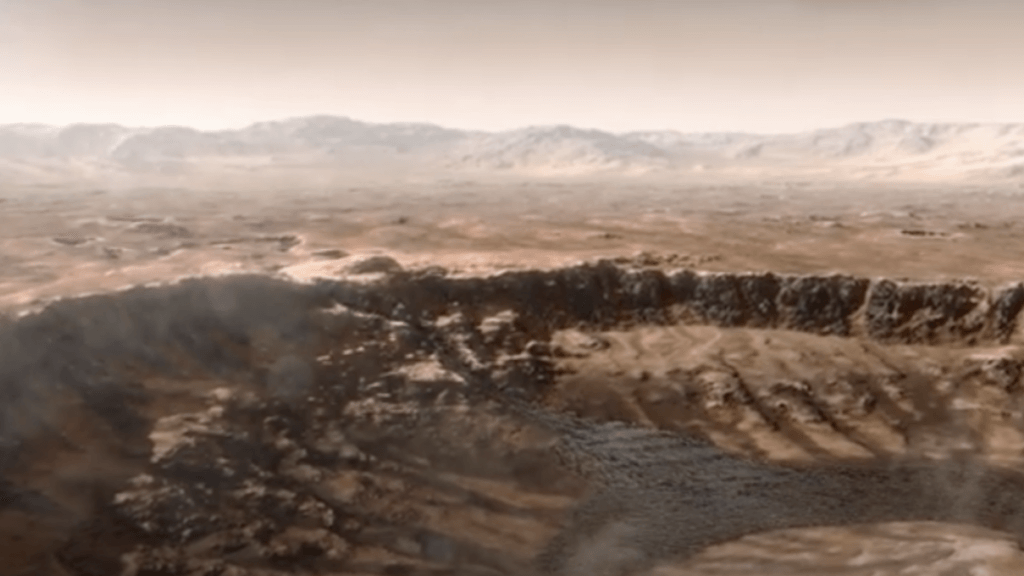NASA is exploring one of the most intriguing spots on Mars: the Jezero Crater.
Planetary scientists suspect that this region, a former river delta supporting a sizable lake, once teemed with water. That’s why the agency sent its car-sized Perseverance rover to Jezero, a 28-mile-wide (45-kilometer) basin that has preserved Mars’ wet past. Of over 60 enticing landing sites, NASA chose to land Perseverance in Jezero in 2021.
The agency has now recreated the momentous event that flooded Jezero some 3.5 billion years ago.
“This animated artist’s concept depicts a scene of water breaking through the rim of Mars’ Jezero Crater, which NASA’s Perseverance rover is now exploring,” the agency explained. “Water entered the crater billions of years ago, depositing sediments that built up into a delta.”
Water travels through a flat Martian plain called Isidis Planitia before breaching the crater’s walls. Water proceeds to fill the basin below:
This momentous event could have had major implications for Mars, as Jezero likely had multiple wet periods over billions of years (similar to how Earth has experienced multiple ice ages and climate shifts).
“Conceivably, microbial life could have lived in Jezero during one or more of these wet times,” NASA said. “If so, signs of their remains might be found in lakebed or shoreline sediments. Scientists will study how the region formed and evolved, seek signs of past life, and collect samples of Mars rock and soil that might preserve these signs.”

Credit: NASA / JPL-Caltech / MSSS/ JHU-APL
Want more science and tech news delivered straight to your inbox? Sign up for Mashable’s Light Speed newsletter today.
At its largest, the lake grew 22 miles (35 kilometers) wide and some 100 feet (30 meters) deep. The river carried mud that could have preserved evidence of extinct organisms (like mud has on Earth), and “high-energy rivers” transported boulders into Jezero.
Perseverance certainly hasn’t yet found any hints of past, primitive life. And it might never. But the NASA rover is certainly sleuthing one of the best places to find this elusive evidence on today’s bone-dry, irradiated Martian surface.
Topics
NASA

